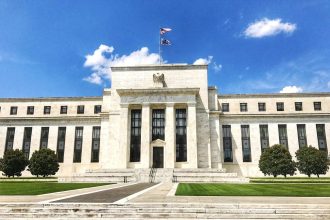Thomas Barwick/Getty Images
Our writers and editors used an in-house natural language generation platform to assist with portions of this article, allowing them to focus on adding information that is uniquely helpful. The article was reviewed, fact-checked and edited by our editorial staff prior to publication.
Key takeaways
- Overdraft protection is a service provided by banks that helps cover transactions when there are insufficient funds in your checking account.
- Overdraft protection typically comes with a fee, but it’s usually less expensive than paying an overdraft fee for each transaction.
- Other options for overdraft protection include linking to a savings account, line of credit or credit card, but these may also come with fees and interest.
- There are other ways to avoid overdraft fees, such as setting up alerts and closely monitoring your account balance.
You may want to enroll in overdraft protection to ensure you won’t ever be turned down for a debit purchase or ATM withdrawal. It can be a helpful service if you ever spend more than what’s in your account, but it usually comes with a cost.
Ultimately, it’s your decision to enroll in overdraft protection. Here’s some information to help you decide whether it’s right for you.
What is overdraft protection?
Overdraft protection is a service provided by your bank that ensures your transactions are covered if you have insufficient funds in your checking account. The bank will automatically move funds you have available in another linked account to the overdrawn account.
The bank may charge you for this service, but the price is usually considerably less than paying an overdraft fee. The average overdraft fee is $26.61 per transaction, according to Bankrate’s 2023 checking account survey.
This amount is an 11 percent decrease from the previous year. The change is likely because many financial institutions have lowered or removed their overdraft fees following pressure from federal regulators and consumer advocates.
In addition to a savings account, you may be able to link to a line of credit to cover shortfalls to your checking account. Another option is linking to a credit card, whereby a cash advance is initiated to prevent the checking account from becoming overdrawn.
Both the line of credit and credit card options may require you to pay a transfer fee as well as interest on the amount borrowed.
Overdraft protection policies, including whether a fee is charged, vary by bank. Ask your financial institution to explain the details so you can decide if overdraft protection is right for you.
The pros of overdraft protection
Overdraft protection provides some benefits:
- Your transaction will still clear even if you don’t have enough money in your bank account, helping to expedite transactions when you’re in a hurry, such as at a gas station or drive-thru. It could save you from embarrassment, too.
- Not all checking accounts charge a fee for overdraft protection transfers. But when they do, the cost is usually substantially less than paying an overdraft fee.
- It may allow checks to clear, which in turn can help you avoid returned check fees from merchants.
- It can provide access to funds in times of emergency.
The cons of overdraft protection
There are also some drawbacks to overdraft protection:
- You’ll have to pay whatever fee your bank charges.
- Some banks assess a fee per overdraft protection transfer, which can result in multiple fees in a single day.
- Transactions may be declined if you don’t have sufficient funds in your linked savings account.
- It might encourage overspending for anyone who doesn’t realize the hefty fees involved.
Should you opt in to overdraft protection?
Ultimately, it’s your decision whether or not to choose overdraft protection. It might work well for you as a way to make transactions clear when you occasionally overdraw your account.
It protects those who worry about finding themselves in the embarrassing situation of having their card declined. It also costs less than overdraft fees that can quickly add up before you realize your account is overdrawn. Imagine getting hit with a fee for every swipe — a $4 latte in the morning just became a nearly $40 latte. Your $10 lunch is now nearly $45, and so on.
Other ways to avoid overdraft fees
Though overdraft protection has benefits and can offer convenience, the potential fees involved may add up quickly.
One way to steer clear of such fees is to simply not opt in for overdraft coverage. Your bank will just decline a debit card transaction if you lack sufficient funds. It’s a way to avoid paying a penalty if the potential hassle or embarrassment is less painful to you than paying an overdraft fee.
Another option is to switch your bank. Some banks and credit unions have restructured their programs to become more consumer friendly. Some accounts even let you overdraw up to a set amount without a fee.
Lastly, keeping tabs on your checking account has never been easier. You can download budgeting apps that help you track your spending. You can also set up text or email alerts from your bank when your account drops below a certain level. Many banks offer multiple alerts. For instance, you can set one up for when your account drops to less than $75 and another for $25.
Bottom line
Overdraft protection can be a helpful and convenient tool to avoid paying a steeper overdraft fee. Whether you should opt in, however, depends on your preferences. Consider your own budgeting and spending habits and weigh the benefit of convenience against the potential fees to decide for yourself.
Bankrate’s Sheiresa McRae Ngo contributed to an update of this article.
Read the full article here
















